Dear Steemit friends :
Military Dependent Villages
In this edition of Travel with me, I'll be taking you all on a tour of a very curious location deep within Taipei's most modern and urbanised areas. Called the South Village 44, it is a village situated just minutes walk away from the built up financial district of Taipei also known as the Xinyi district. It is a classic example of aged buildings mixed in with the ultra modern, a fairly common sight in Taipei and also one of the reasons why it is such an exciting metropolis to visit and explore.
The South Village 44 is a well known location for photography because of the opportunity to capture the ultra modern sky scrapers such as the Taipei 101, together with the urban slums. Though the village is no longer inhabited, it has become an important landmark for cultural and historical preservation, visitors will discover the history of the village beyond being an early settlement and in-fact, connect the dots with how Taiwan went about it's own development after the second world war. This era was of course a pivotal time for the cultural and societal development of people living in Taiwan. After all, the island was no longer the home of just the natives, but also for the followers of Chang Kai Shek and the Republic of China.

In the years that followed their retreat from the mainland to Taiwan, many villages similar to South Village 44 were constructed to rehouse the over one million soldiers and their families. Originally intended as temporary residences for the anti-communists - who shared a common belief that they would shortly retake the mainland, the houses in these villages were constructed very poorly; as a result, they suffered from many urban problems such as dereliction, decay and even social unrest.
South Village 44 was the first of these purpose built villages, but very quickly these "Military dependants' villages" as they are now referred to, became wide spread across all of Taiwan. This of course had dramatic societal impacts as the mainland visitors sought to make Taiwan their home whilst the natives felt that their turf was coming under threat.
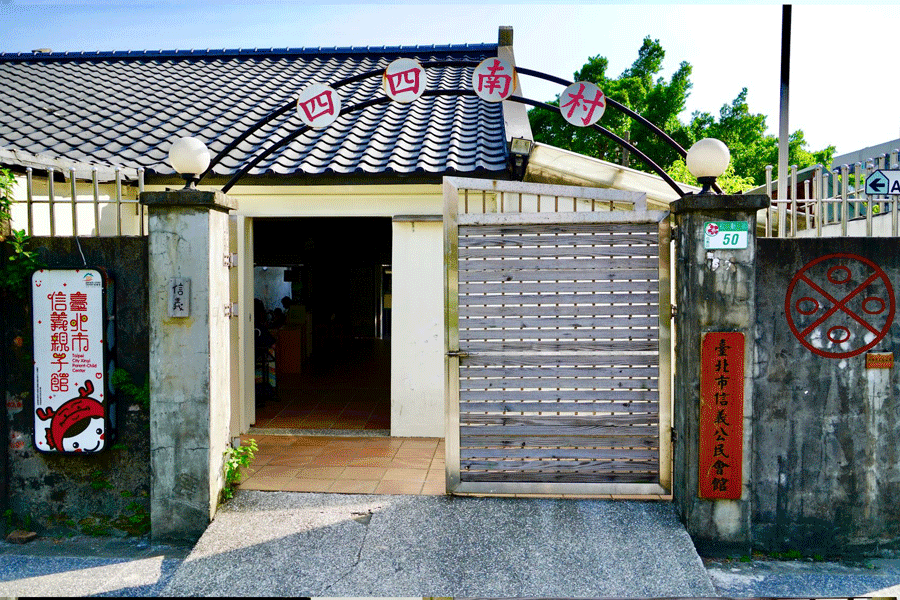
During the 1990s, the government of Taiwan recognised some of the urban problems presented by these mostly abandoned villages and began a program of systematic demolishing of these villages, and in their place, high rise buildings. It wasn't the case of eviction and forcing the remaining residents to become homeless because they were granted rights to live in the new apartments. Today, the number of Military Dependent's villages number at 170, and are mostly used as historical sites with a cultural value instead of actual places to live. At the peak, there were nearly 900 villages scattered across all of Taipei.
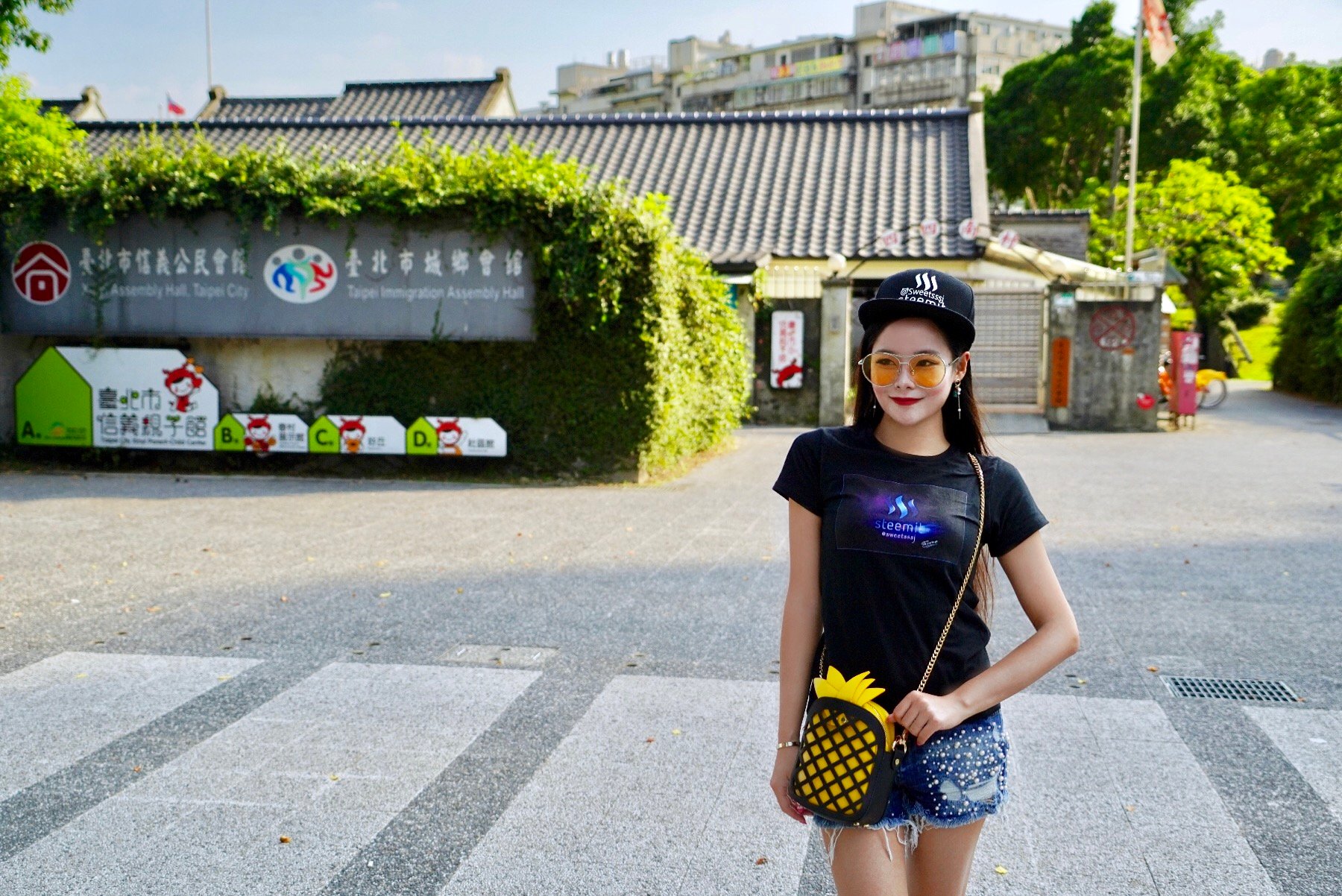
Being the first Military Dependent Village, South Village 44 has weathered the decades very well, and despite looking like a derelict urban slum, it has tremendous character with it's vibrantly colourful doors, adornments, and cartoons stuck all over the beaten down buildings. Some of the walls looked no more than the rock, stone and dirt they stand on. It's hard to believe that most of the walls were originally built with mud consolidated bamboo walls, only to be replaced with bricks some ten years after.
In-fact, the villages were constantly a work in progress, starting off with the necessities and gradually adding in things like sewage systems for toilets, kitchens, real roof tiles (instead of straw) and even electricity.
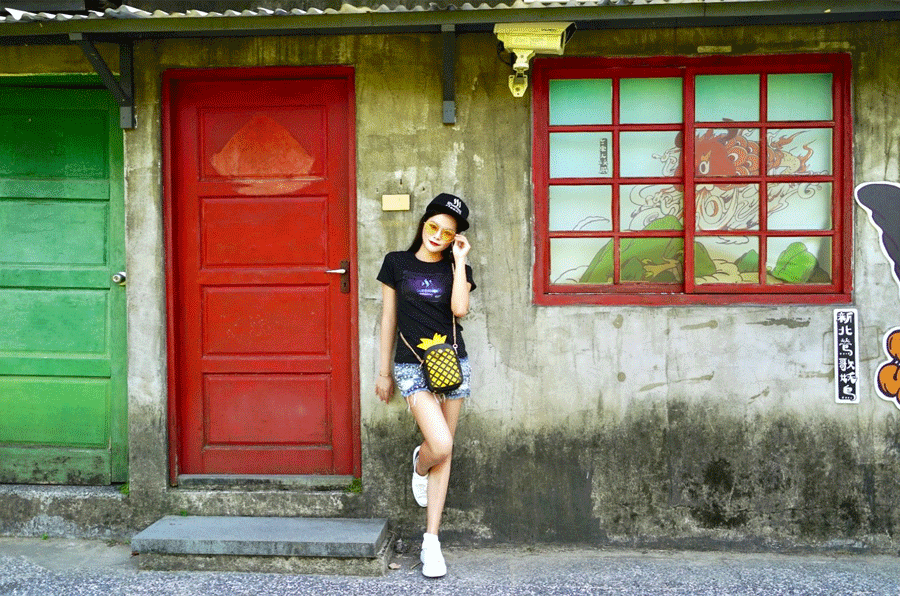
The properties in these villages were continually improved until they reached parity in standards with the buildings of the natives. The residents of these houses were provided with around 3 square meters of space, and they were given no ownership rights to the property nor the land. This became a problem when the real estate market boom happened in the 1970's and many of the village properties once again fell behind the developments.
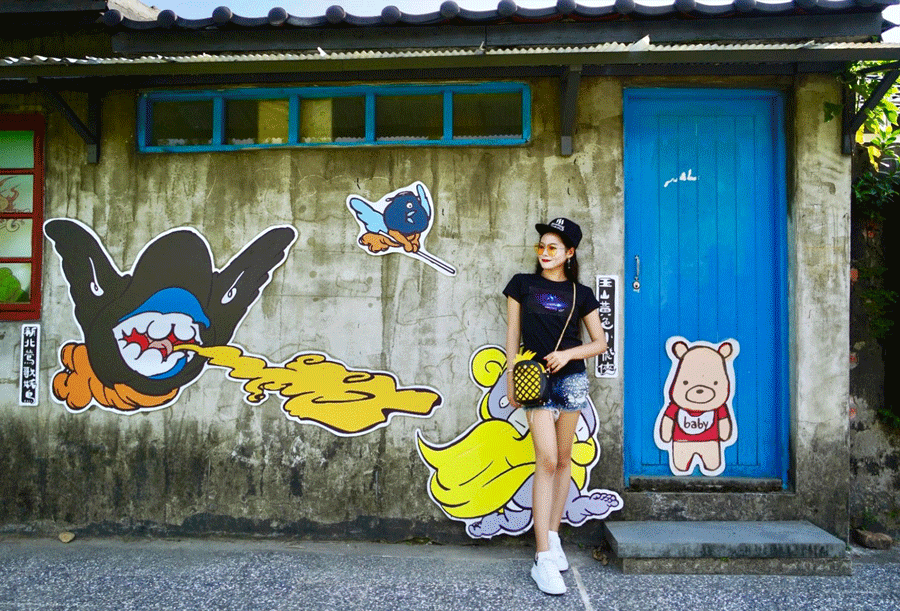
Settlers isolated themselves from the rest of society and developed their own cultural defaults. For many decades, the military villages had their own social systems which in practice were brought over from China. As they say, birds of a feather, flock together and this certainly applied to the two distinct groups of people sharing Taiwan.
The military villages used to be heavily guarded and thus, access to the village was restricted to those who could produce resident permits. In addition to having access to the village, the resident permits also provided them with the necessities they would otherwise be unable to afford due to low salaries. Necessities would include : rice, flour and vegetables.


South Village 44 in the modern day.
In the 1990's, the government began demolishing swaths of military villages which by then were largely uninhabited or abandoned entirely. Many of the original houses of village 44 were destroyed and new properties were erected in their place. What remained became a historical site promoting and educating people about the tumultuous tides of history.

Right at the front gate, you will find a child day care centre, hence the colourful doors, cartoons and statues, but you'll also find an art centre, a store, a cafe named Good Cho's and a museum exhibiting some of the living environments of the original settlers as well as the kinds of things they used to live, day to day.
Outside the museum, there are many different photo opportunities and it will be part of the fun to try hunt for them. One of the most obvious ones would be this "instagram" like frame at the entrance to the museum.
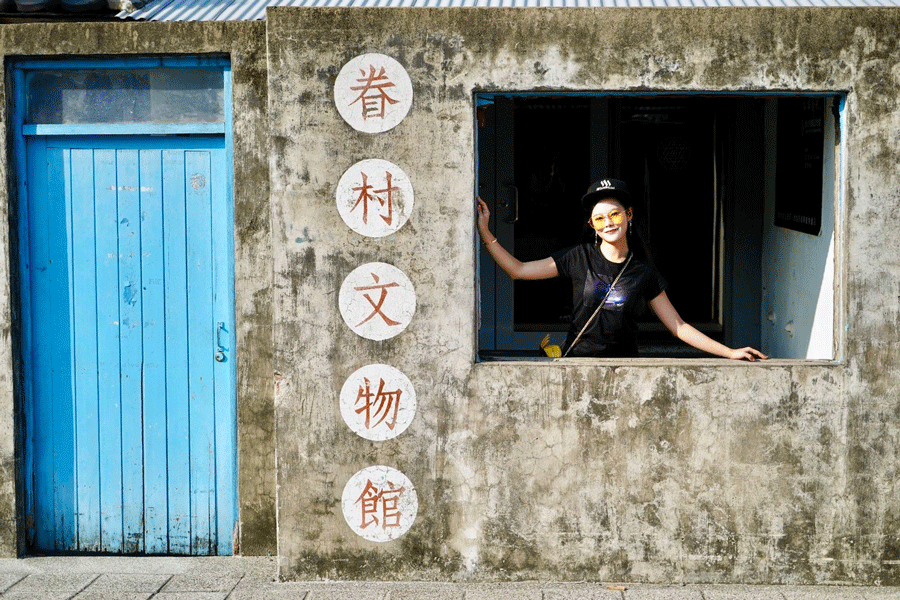
The Taipei 101 is a five minute walk away from South Village 44 so I would recommend visiting both on the same day. I really like this photo of the village but with the Taipei 101 skyscraper in the background. It's a really distinct contrast of landscapes but also a representation of the history and development of the city.

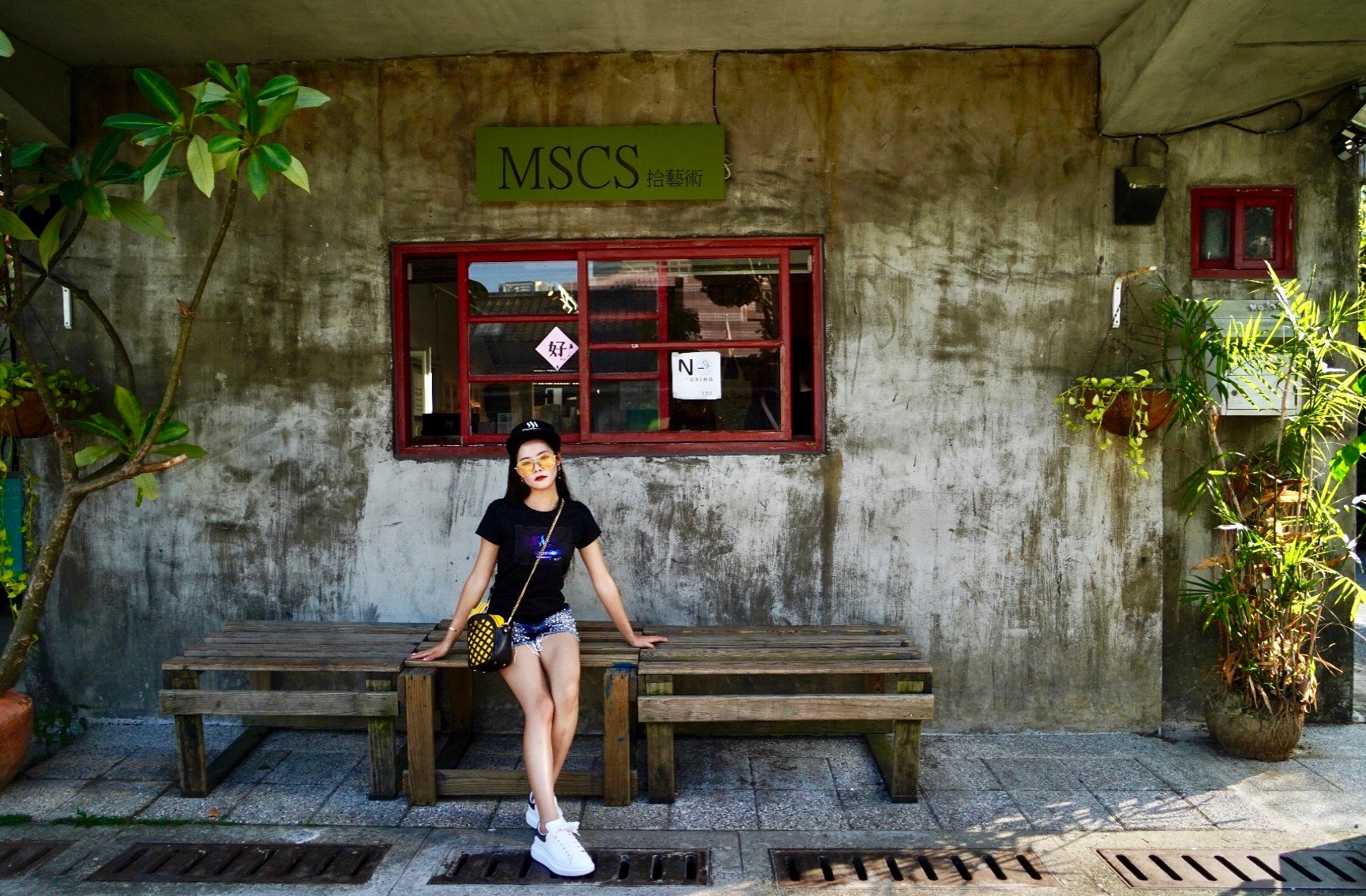

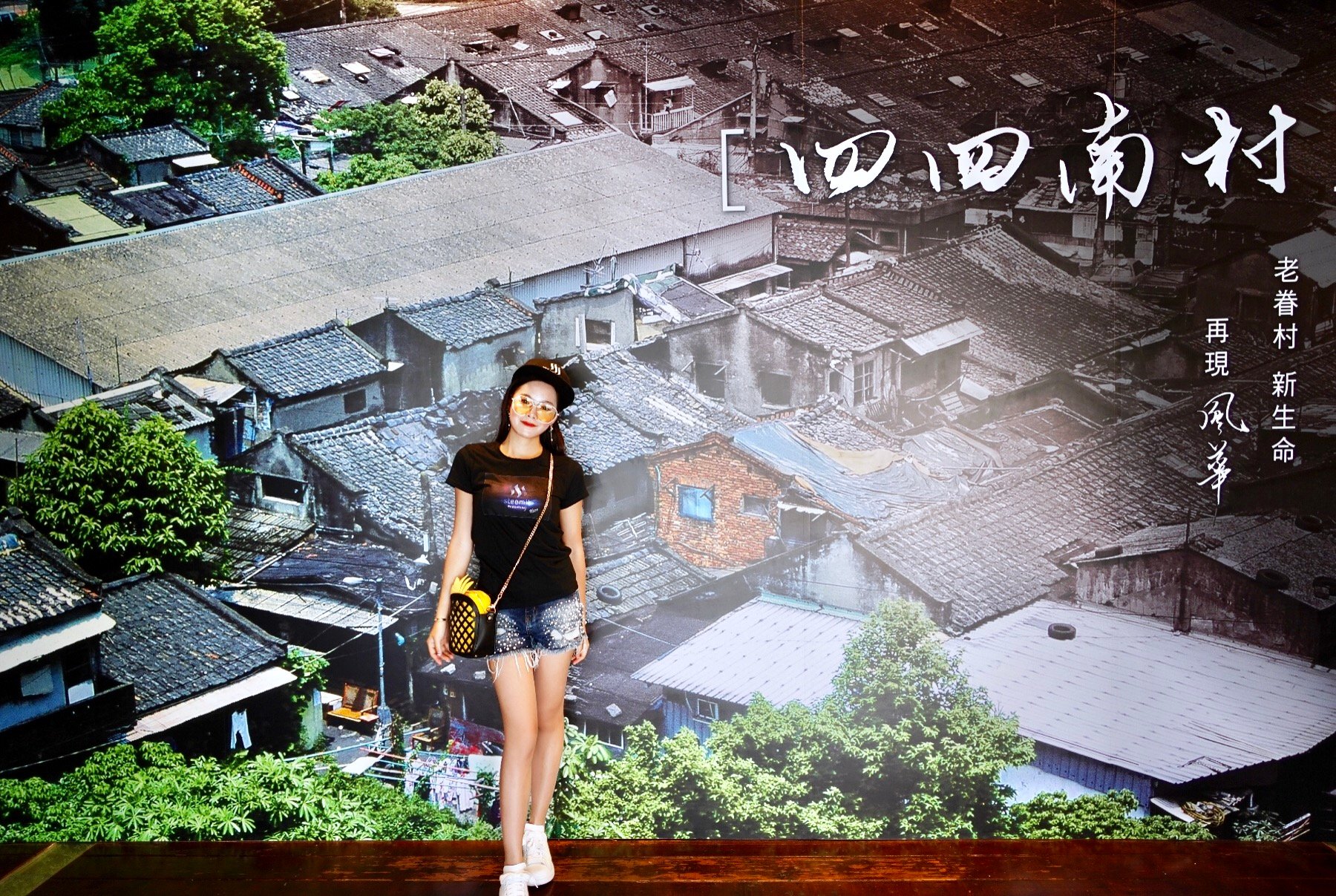
Military dependents' village and rest of society.
As I mentioned briefly before, the military dependants villages (also known as Juan Cun) were largely segregated from the rest of society. All of the villages were built to house the KMT military and their families, and were enjoying welfare provisions far better than the rest of the people in Taiwan. In-fact, this imbalance of resource allocation become a point of contention through out the martial law era.
All of the military families believed that their stay would be temporary and that they would very soon retake the mainland. They did not treat Taiwan as their home and thus developed isolated but organised social systems of their own. As the stalemate drew out longer, many of the soldiers became more and more integrated with the rest of Taiwanese society, even marrying Taiwanese women. This turned out to be the source of tranquillity and harmony between the two groups of people in society, and also the beginnings of cultural exchange between the ethnically different Chinese people.

It's fascinating when you think about the KMT militants and their families who came over to Taiwan expecting a swift return to the mainland. It wouldn't be until 1987 that they were allowed to return home and see their loved ones who they left behind during the retreat. For nearly 40 years, they militants lived under perpetual uncertainty, not knowing when they'll retake the mainland, or whether the communists will attack the island. More than that, they were uncertain about their families back home and whether they would see them again. Even though many of the militants became integrated into local communities, they were never truly able to forget the hardships they endured all these years, as well as the homesickness which developed.

Tightly knit communities within the military villages meant good relationships with those within the community, but it also meant isolation from the local Taiwanese. Being an unwelcome minority meant a constant fear of local uprisings against the mainlanders.
One of the most famous gangs which spawned from these villages was called the United Bamboo Gang which is still active today. Together with their unofficial ties to the KMT, they have been involved in a lot of organised crimes ranging from the murder of the dissident journalist, Henry Liu in 1984, to murders, drug trafficking, sex trafficking and much more. They were originally formed by adolescents in the villages who feared threats from the locals but were later unofficially supported by the KMT to uphold it's dictatorship.


Coming from China, I found Taipei to be quite unique in terms of architecture, particularly around the Xinyi District. This is because the Taipei 101 dominates the skyline making everything else seem like low rise buildings. It is even more impressive that South Village 44 was not entirely demolished and replaced with the modern buildings we just five minutes walk away.
Cultural conservation efforts were able to save a large part of this particular village, but also many of the others. For example, the Act for Rebuilding Old Quarters for Military Dependants was revised to provide for this cultural conservation in 2007.

Higher ranking officers of the KMT military were allocated more space, in larger and nicer houses. These two story houses are examples of such houses.
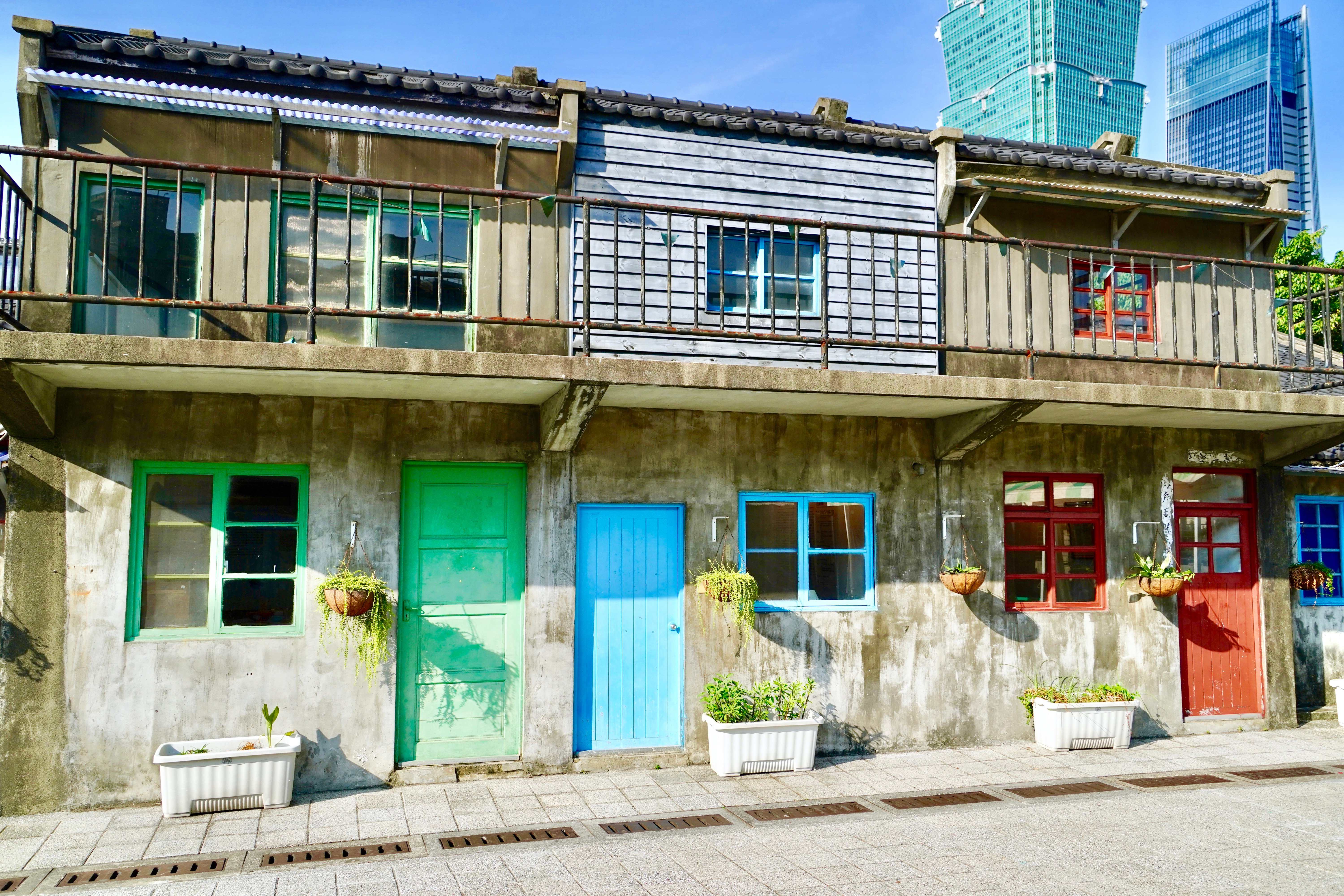
Meanwhile, these long and narrow alleyways were the result of crammed housing which was hastily built for the lower ranking soldiers.


The village museums and exhibitions
South Village 44 has several exhibits inside it's museum. The purpose is to show what the way of life was like for people living at these military dependant's villages. All of the items displayed in the museum are real items donated to the museum by people who used to live in the village. Seeing all the home wares and reconstructions of living quarters give you a much better idea of how people lived in those times.

The exhibitions are broadly grouped into four different categories, each showing a different angle of life in the village. These groupings are shown by the circular signs at each of the "rooms". There is a history section, living space section, food and kitchen, as well as education section.
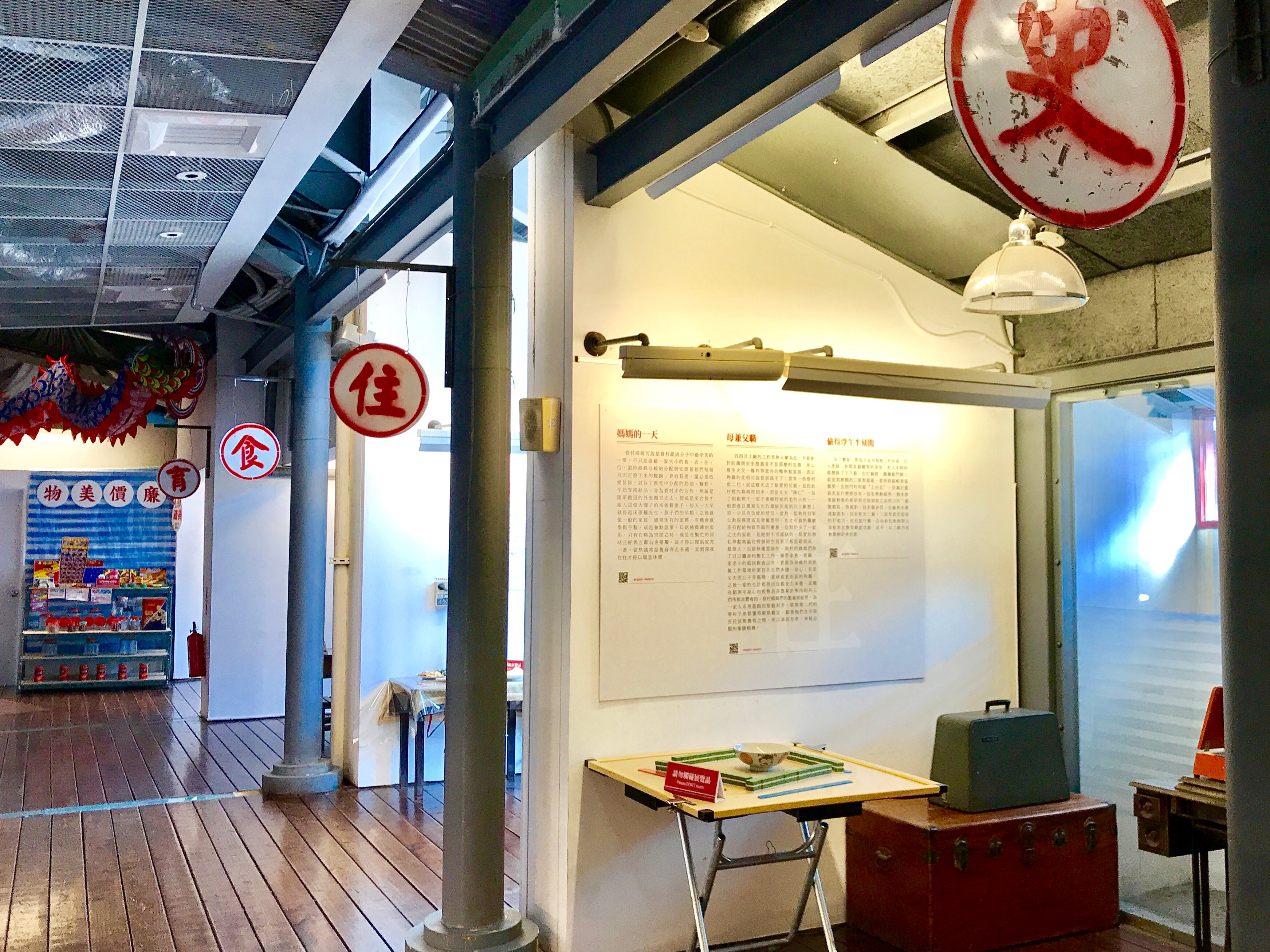
These are some of the historical records of the village as well as a model reconstruction of the full village before most of it was demolished.

Because the mainlanders came from all areas of China, they brought with them a wealth of different cuisines and cooking styles. Later on, all of these cooking styles blended into the native Taiwanese food culture and helped it to become the popular food heaven Taiwan is known for today.

Early on, the villages would have communal canteens where food would be served. Below, you can see some ox the examples of the foods that were served as well as some photographs of the original villagers eating at the canteens.

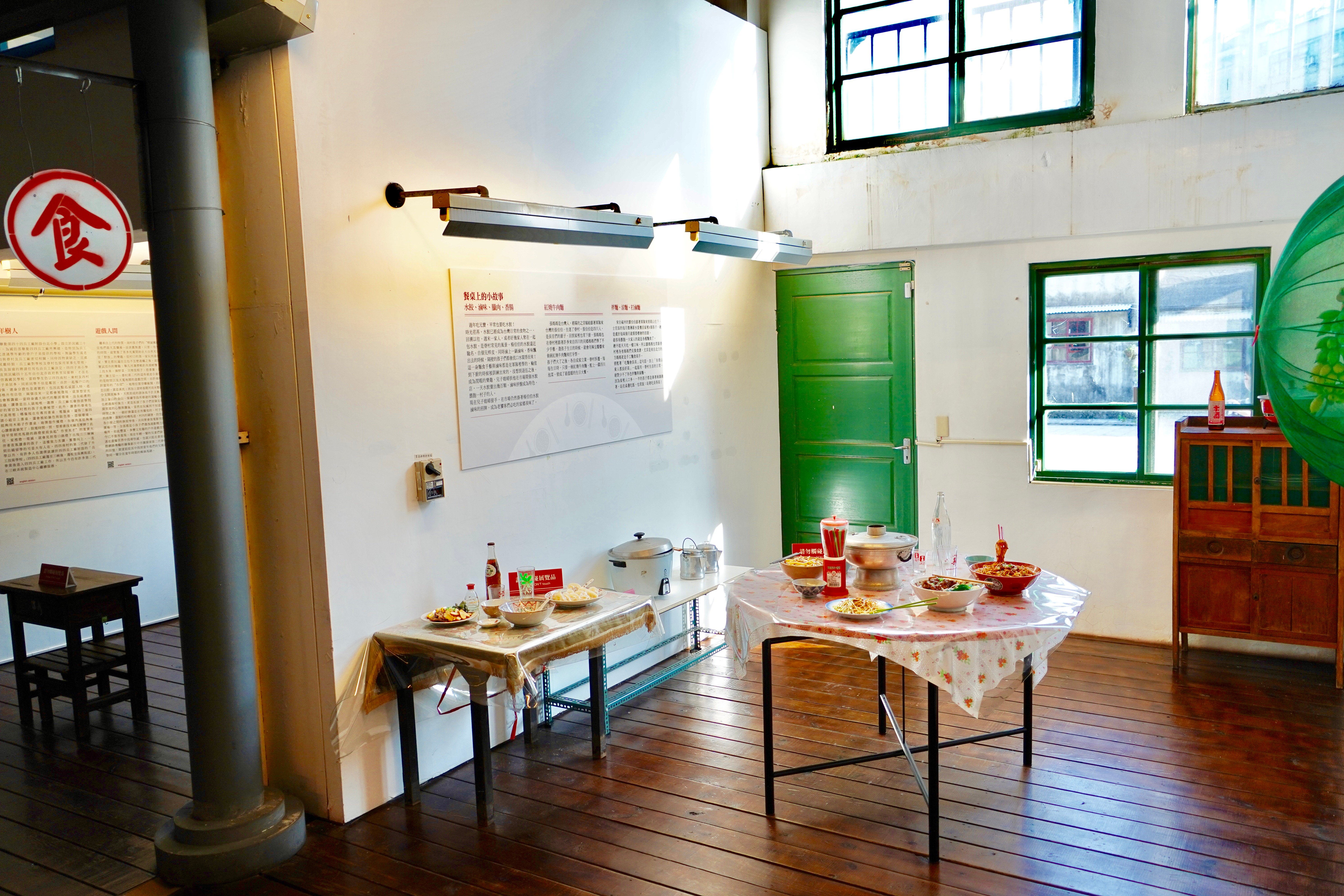

Next up, we'll have a look at some of the living areas.

Mahjong was the most popular leisurely activity and was frequently played by women who also worked on the sewing machines.

These are some examples of currencies issued during the KMT dictatorship.
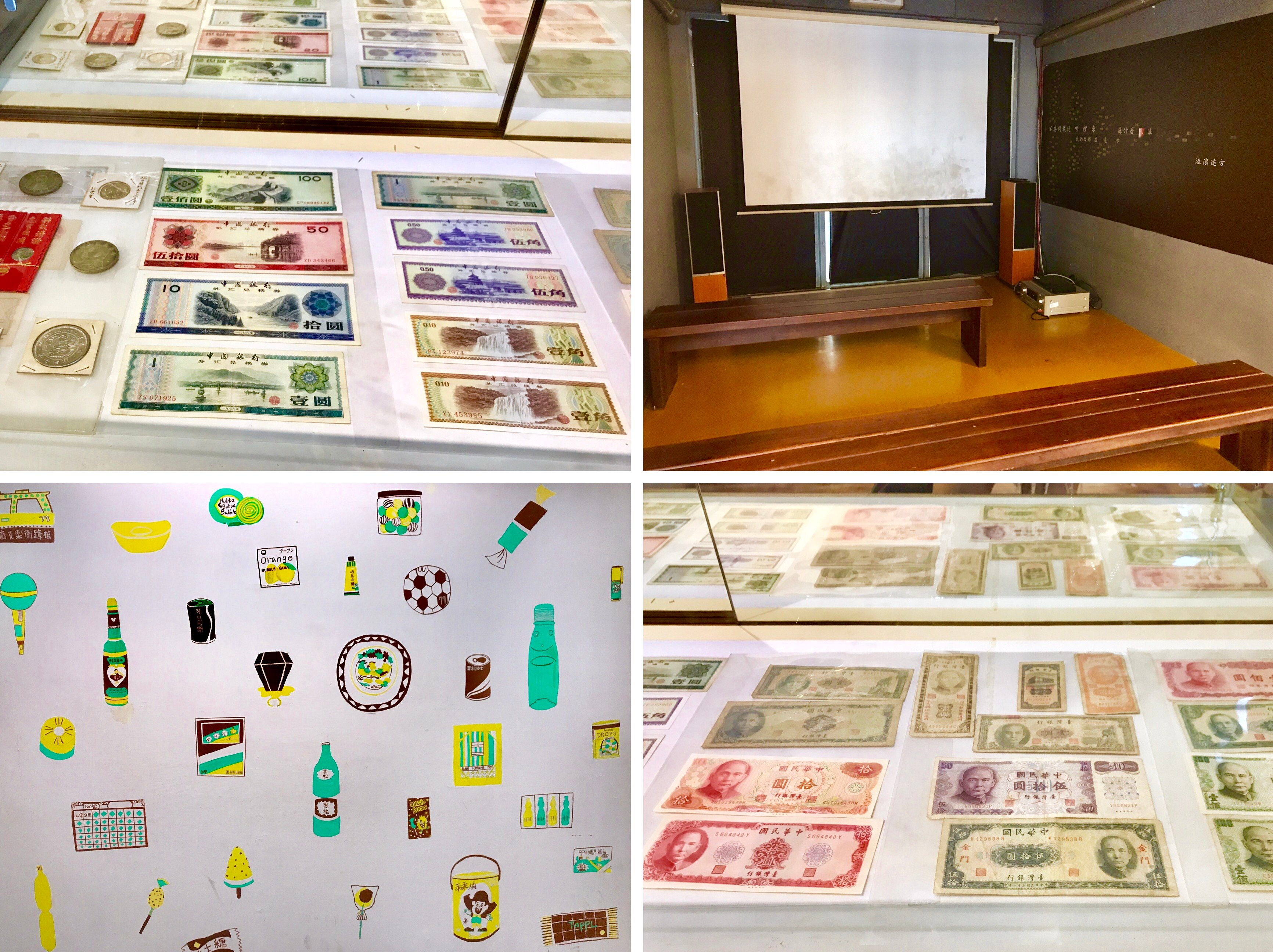
A typical living room would have a sofa and then a small tea table in-front. This layout is very common in Chinese homes even today. The only differences would be today, the sofa would be facing a large TV, where as in those days, people might instead choose to read, and drink tea.

The dragon that you see in the pictures below is significant because it was once considered the guardian of the south village 44. The dragon that you see is actually a small replica version of the original. It was placed here to remind the younger generations of the original protector of the village.
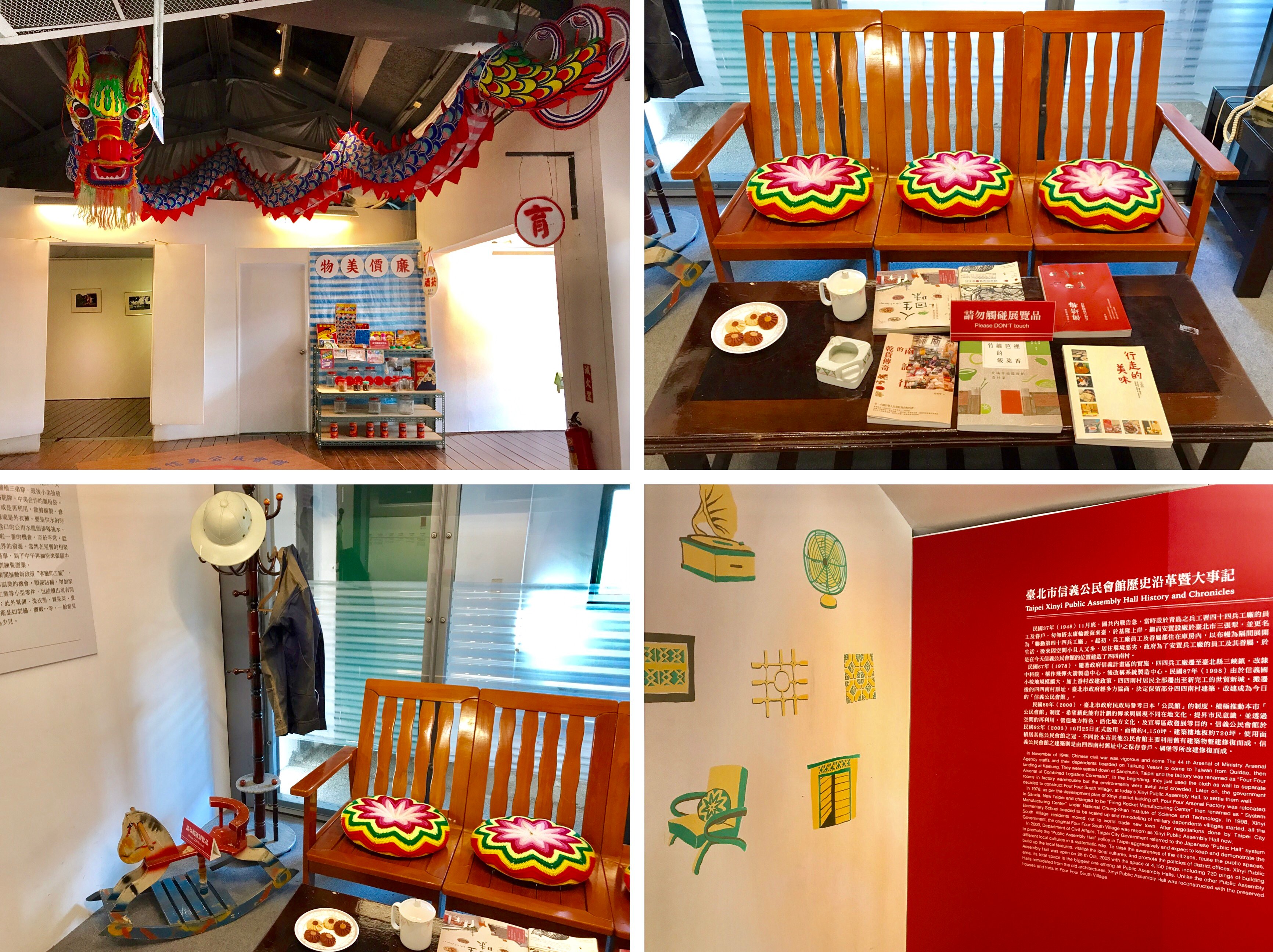
These are the chairs and desks used for the children in primary schools while in class. Amazingly, these are still very similar to the ones used today in China and Taiwan.

This is an example of a living space for a low ranking officer. This includes two bedrooms, one high, and one low, with the bottom one using a crude modesty dividing curtain.

These are some of the early resident permits of the village and also pictures of the retired soldiers.

Food interlude.
Midori ice cream is one of the home run businesses in the village, but you'll also find an art center, a souvenir store, and a cafe. These small businesses help support the locals as all of the products are locally sourced. On Sunday's, there is also a farmers market in the courtyard.
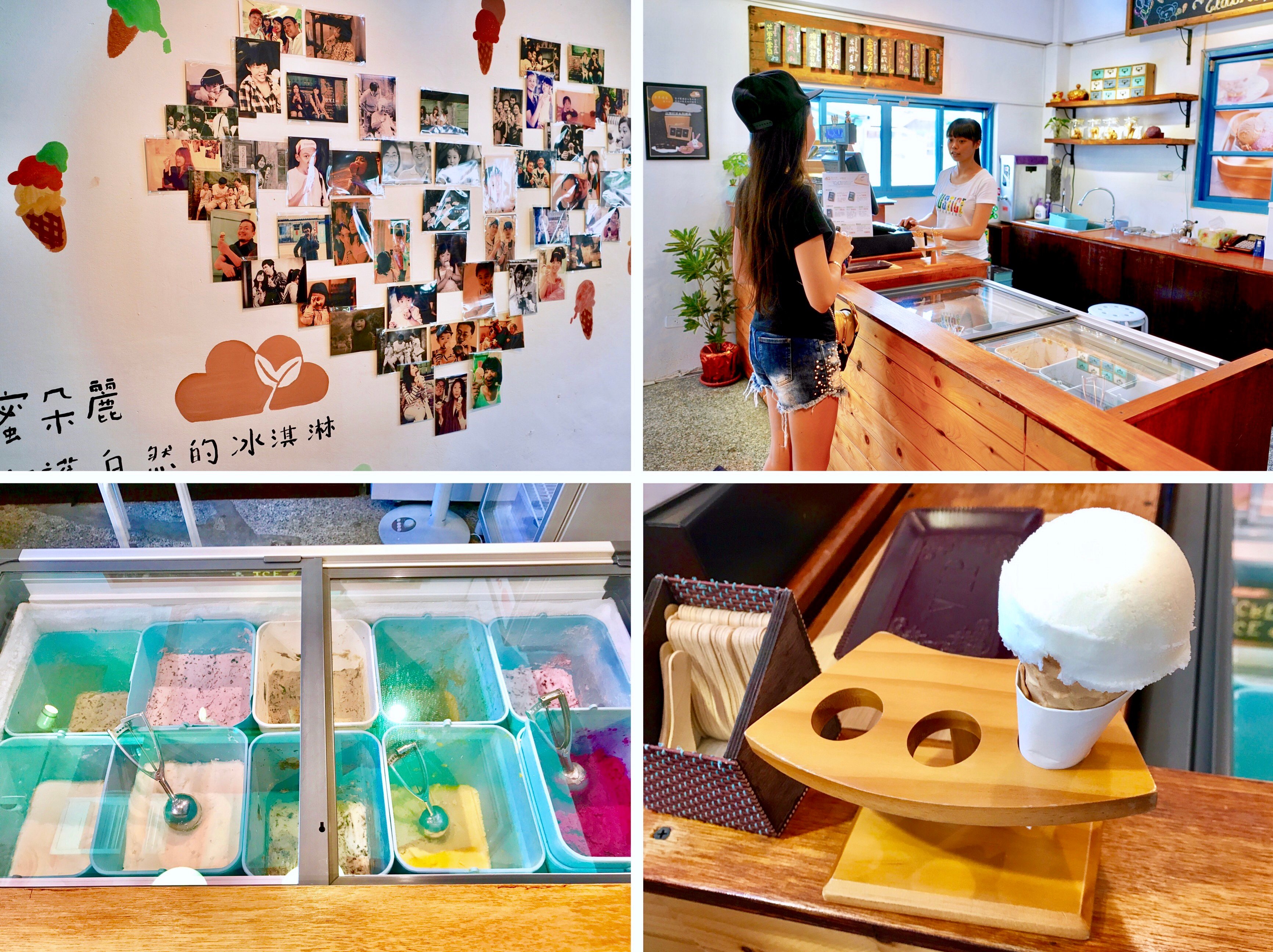

Jian Hong Beef Noodles
After a quiet afternoon at the South Village museum, it was time to eat. A lot of the time, restaurants which local Taiwanese people like to visit are not found in the popular social media channels. These are restaurants serving truly authentic Taiwanese food, how can you tell that it's all about the food? Well one look at the venue and you'll see how raw it is. There is almost no branding or marketing, no fancy logos, or intricate interior designs. It's all about food after all.
Without being recommended this by a Taiwanese friend, I probably wouldn't have even noticed this restaurant which is tucked away in a corner just outside of Ximending in a run-down old looking area.
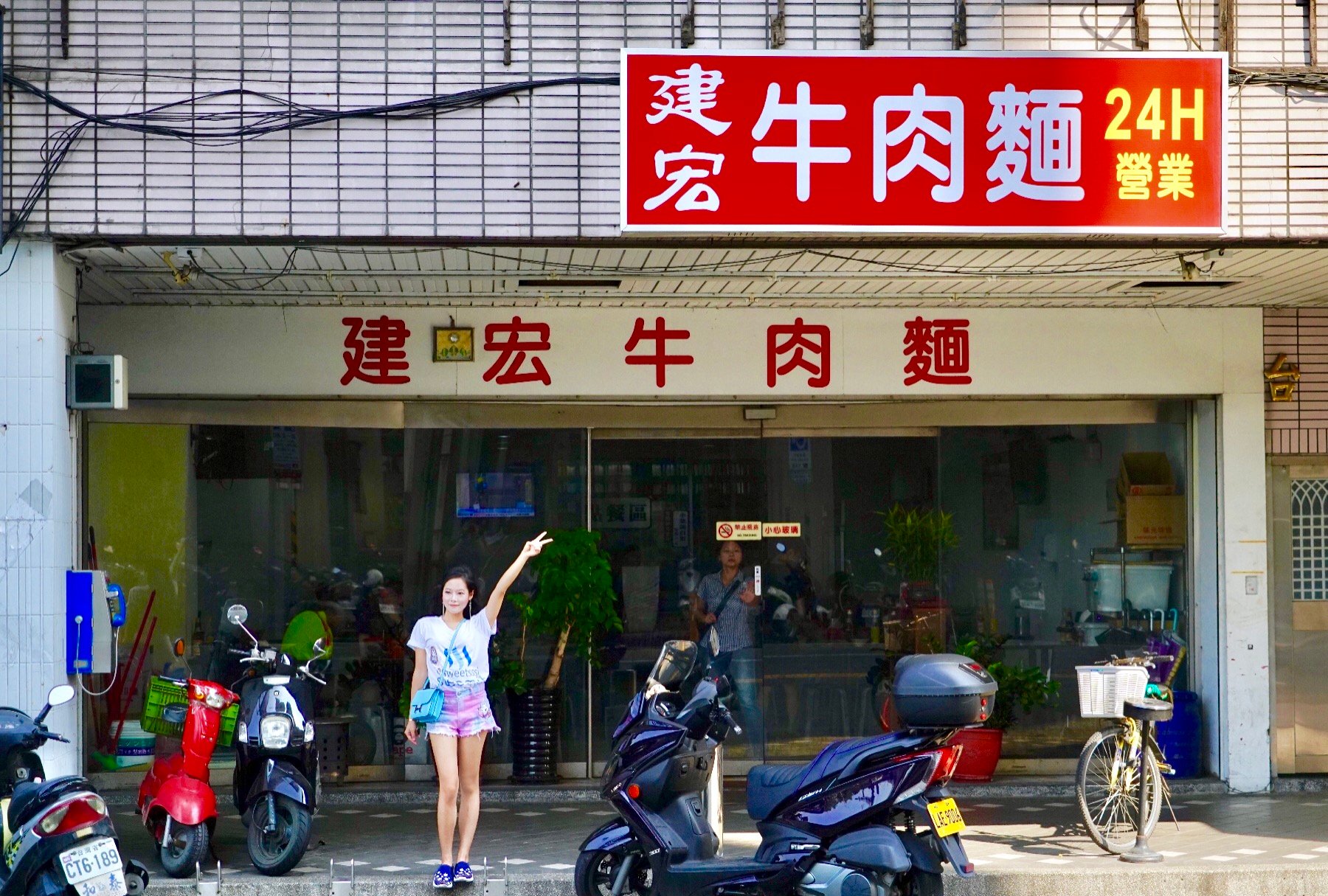
The restaurant has a good selection of side dishes, ranging from pig's ears, pickled cucumbers, sliced potatoes, seaweed and thousand year eggs with tofu.

I opted for the seaweed, pickled cucumber, and thousand year egg with tofu. All cold dishes which go very well with the soup noodle that is up next!

Voila! The star of the show, the beef brisket noodle soup. You can add some pickled cabbage and caviar which are provided free at the table. The beef slices are a good size and very tender. So much so, that it pretty much falls apart in your mouth whilst releasing a chorus of flavours making you wonder how much taste can be in a slice of meat.
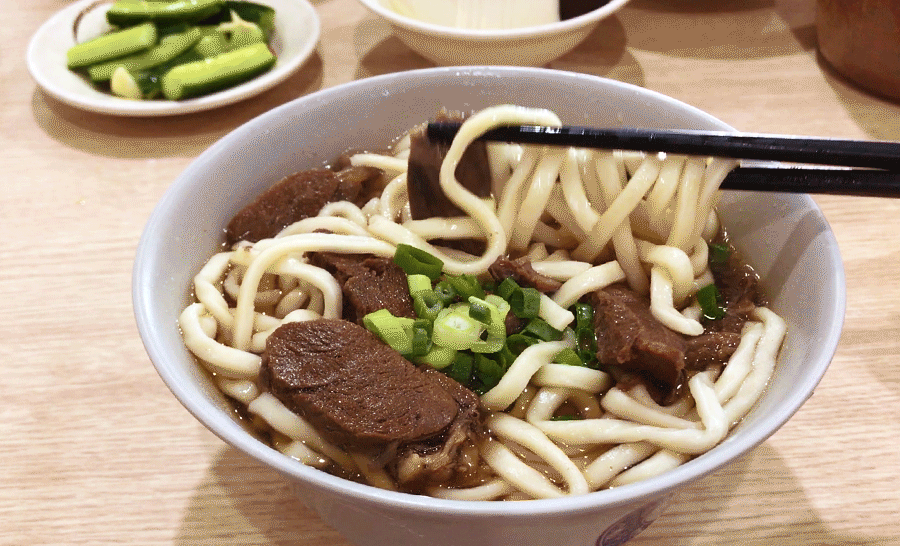
One things for sure, the noodles whilst chewy do a lot to calm down your taste buds from the explosion of flavours of the beef in the soup.

It's amazing that serves such a good for value bowl of beef noodle soup can taste as good as some of the most up-market posh venues in town. The environment may not be luxurious, but the positive side is you get to experience it like a local would and that's the whole point!

And that wraps up our visit to the South Village 44 Military Dependant's Village. Even though the activities and things to see at the village are quite limited because of it's small size, it does possess a certain degree of historical character with it's old retro buildings and colourful windows and doors. Photo opportunities aside, the village is an important part of the cultural heritage of modern Taiwan, filling in the bigger picture of how history played out after the Chinese civil war, resulting in the societal landscape we observe today between Taiwan and China.
Do you remember the movie "Brokeback Mountain"? Or "Crouching Tiger Hidden Dragon"? What about "Life of Pi"?
These are all movies directed by the highly acclaimed and respected Taiwanese film director. His background is very interesting because he actually grew up in one of these military dependant's villages. Many second generation military villagers went on to lead very affluent lives, another example of a person who grew up in a military village was Teresa Teng, one of the absolute most famous singers in China and Taiwan.
From visiting south village 44, I felt as though I travelled back in time to observe and learn another dimension of Taiwanese history. The tranquil setting makes the South Village 44 a wonderful place to spend an hour or so reflecting on the tides of history.
Don't forget to vote if you liked the post, follow if you haven't already, and leave a comment to let me know what you think!

在旅行中,我总是喜欢从多种的角度凝视一座城市的美,尽管都市昼夜不息的绚丽灯光,闪烁跳跃,让人为之着迷,但是脚踏实地的深入灿烂的背后,探索那段朴实无华的过去,却更加打动我的心。信义区是有着台北曼哈顿之称的新兴商业中心,在这个光彩夺目的时尚街区,充斥着紧张忙碌的脚步和快节奏的生活,但是你有没有看到,在与地标建筑台北101一街之隔寸土寸金的地方,有一个被遗失的小角落,承载着这片土地上复古怀旧的文艺情怀,也是梦开始的地方,这就是台北地区的第一座眷村——四四南村。
通往四四南村的路,像走进了时光隧道,一面是一柱擎天的新时代吉祥物台北101,一面是古朴的老房子,当我捕捉到这新旧建筑同框的画面时,一面繁华一面淳朴,这现代与古早味的强烈对比冲击着眼球,然而带来的不是违和感,反而是新旧并融的和谐以及时光交错的奇妙感受。四四南村可以说是台湾近代史的缩影,也是台湾社会一个特有的情结,这些以木材,竹篱,石灰和瓦片所建成的房屋,诉说着美丽的哀怨。这里最早居住着当年随着国民党政府撤退来台的军人和百姓。因为这个眷村是由青岛第四十四兵工厂的员工及眷属所修建,正好又位于四四兵工厂的南边,所以叫做四四南村。结束战乱生活的人们渡海来台,却要继续与穷困贫苦的生活搏斗,就这样一间间3.5平的狭小房间,成了当时的一个临时聚落,而在他们的心中,却守着那份想要回大陆的执念,可惜这一待,就是漫漫几十个春秋冬夏。
随着岁月的流逝,眷村里的第一代人在这里落地生根,开枝散叶,也有了眷村第二代的诞生。而他们心中未了的情愫,就像余光中《乡愁》里泛着淡淡忧伤的句子,透露着历史斑驳留下的痕迹。而如今随着城市改造更新,曾经的眷村也一一改建搬迁,四四南村成了唯一保留下来的民俗文化眷村。喜欢台湾的怀旧,总觉得懂得回顾历史,才可以有更前瞻的未来。我伸出手抚摸这闪烁着历史光辉的一砖一瓦,很有年代的氛围和昔日的光景,依旧能感受到那种如今仅保存于影像中物是人非的哀伤。这里红砖墙,木窗框,配上了彩色的木门,个别的水泥墙上画上缤纷色彩的涂鸦,成了亲子馆,同时也成了时髦都市里文艺气息最浓重的拍摄圣地,不仅有很多明星,本土小众乐队来此取景,还有不少自带反光板的文艺青年,也是一道靓丽的风景线吧,我当然也不能错过这与历史同框的机会,泛黄的砖墙搭配鲜艳颜色的窗框和木门,还有不少绿色植物的陪衬,随便怎么拍都好像是电影里的镜头,让我非常欣喜。
四四南村一共分为四个馆区,A、C、D馆平时会举办一些展览、集会和演出,而B馆保留下来当作眷村展示馆,在馆内还原了当年充满人情味的眷村生活景象。走进小馆中,读一读眷村居民记忆中的过去,让浮躁的心灵沉淀下来,同时我也很感慨的看到人们非常用心的保护这片历史痕迹,并且将这里规划成历史建筑物,无论时代如何变迁,那份难得的情怀和珍贵的历史将永远保存下来。展馆里展示了老兵的生活环境,从衣食住行以及教育和娱乐分类,分布在不同的小房间,在第一间房间里,有旧时的衣服,眷村妈妈的手工艺,缝纫机,还有麻将桌,时光荏苒,这些器具依然散发着古朴浓郁的生活气息。据说那时候的眷村妈妈可是精通十八般武艺,不但会烧饭,还擅长刺绣,织毛衣和裁缝。听说过去的女性要很懂持家之道才能嫁人,我默默的感慨也敬佩那一代的优秀女性,然后默默低下头,反省一下自己,并庆幸自己没有活在那个年代额。
在“食”的房间里展示了眷村美食,眷村是个有故事的地方,而眷村的餐桌上更是传奇,过年吃元宝,平日也要吃水饺,还有卤味拼盘,腊肉和香肠都,以及融合了四川和台湾口味的辣豆瓣酱红烧牛肉面,再加一碗四川泡菜,就成了温暖的眷村口味。当然还有拌面,凉面和打卤面,在物资稀缺的年代,眷村妈妈努力的用简单的食材发挥各种创意料理,让孩子吃不腻。餐桌上放了好几碗面的模型,这要是真的,我会忍不住夹一筷子尝尝鲜呢。其他房间还能看到旧时的脚踏车,早期钱币,信义小学的桌椅,以及各种相关史料,还有老照片和口述历史纪录,一路走过去脑海里就像看了一场现场版的眷村纪录片。场馆屋顶上的一条龙,吸引了我的注意,这就是原本四四南村的镇村之宝,四四巨龙的缩小版,现在巨龙的原型已经被军方收藏,真希望在未来四四巨龙可以重现人们视野之中。走完了一整个展示馆,经历了那段文化与历史的洗礼,再来看看旁边的市集,里面主要售卖眷村的文创产品,手作,蛋糕,特产,衣物等等,同时我还忍不住尝试了当地的纯天然无添加特殊口味的冰激淋,味道真的好纯正。
我不得不承认,可能是刚才看到眷村展示馆里大碗的牛肉面,惹了肚饿,只好匆匆找寻牛肉面的踪影。这家建宏牛肉面算是解救了我呀,非常平价却不平凡的牛肉面,开店20余年,如今24小时营业可见需求量是不减反增呢,店铺装修明亮干净,客人根据墙面上的牛肉面种类点菜,在小菜区,客人可以自由选择想吃的小菜,并从冰箱拿出,渴了就到饮水机接一杯冬瓜茶,清凉一下,这感觉就好像回到了自己家里一样亲切,所以特别喜欢这里悠闲自在的气氛。我点了一碗当家的招牌牛肉面,只见一大碗牛肉面冒着热气上桌,桌面上已经为客人摆好了吃牛肉面不可或缺的配角,辣牛油,酸菜,蒜头,我加了两勺外观橘黄油亮,闪闪动人的辣牛油,又加了点榨菜海带作配料提味,调味料有白醋和镇江醋,白醋提鲜而镇江醋会让味道更浓厚,可以根据个人喜好添加。我学着厨师的样子豪爽的添加各种配料,让这一碗自己配料的牛肉面秀色可餐,搅拌一下牛肉面的浓稠香味愈发散出,简直让人垂涎欲滴,建宏的牛肉面不仅面很劲道,而且分量十足,肉多而且超大块,汤喝完了还可以免费续汤,真的是超级享受呢!今天的台北怀旧和美食之旅就要告于段落了,之后还有更多精彩的游记想要和大家分享。
My video is at DLive

